
Title image above is copyright © Kristi Ellinopoullos
First published 3rd August 2025
The Araucaria genus comprises twenty species, now native only to the southern hemisphere, though they were once worldwide from 66 to 200 million years ago.
The Bunya Pine (Araucaria bidwillii) and Hoop or Moreton Bay Pine (Araucaria cunninghamii) are native to eastern Australia, but people in eastern coastal Australia are most likely to encounter two non-native species when generally out and about: the Norfolk Island Pine (Araucaria heterophylla), and the Cook Pine* (Araucaria columnaris).
(* Sometimes called Cook Island Pines, but they are native to New Caledonia, not the Cook Islands. The species is actually named after Captain James Cook. Other names include Cook’s Pine and the New Caledonia Pine.)
None of these are actually pines, as true pines belong to the Pinus genus. But all are conifers like pines, producing cones and not flowers.
All four can be found in the conifer section of the Wollongong Botanic Garden.
A young Cook Pine can resemble, and be mistaken for, the Norfolk Island Pine. When mature, as denoted by the specific part of the binomial name — columnaris — the Cook Pine is a tall, slender and columnar tree:
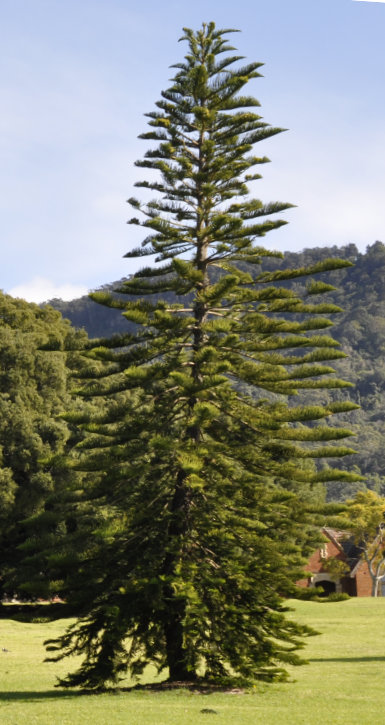
Araucaria columnaris
copyright © Kristi Ellinopoullos
But the Cook Pine has one very unique characteristic, possibly not shared by any other tree on the planet. Do you know what this is? It isn’t so obvious in the photo above because of the angle at which it was taken. But what about here?
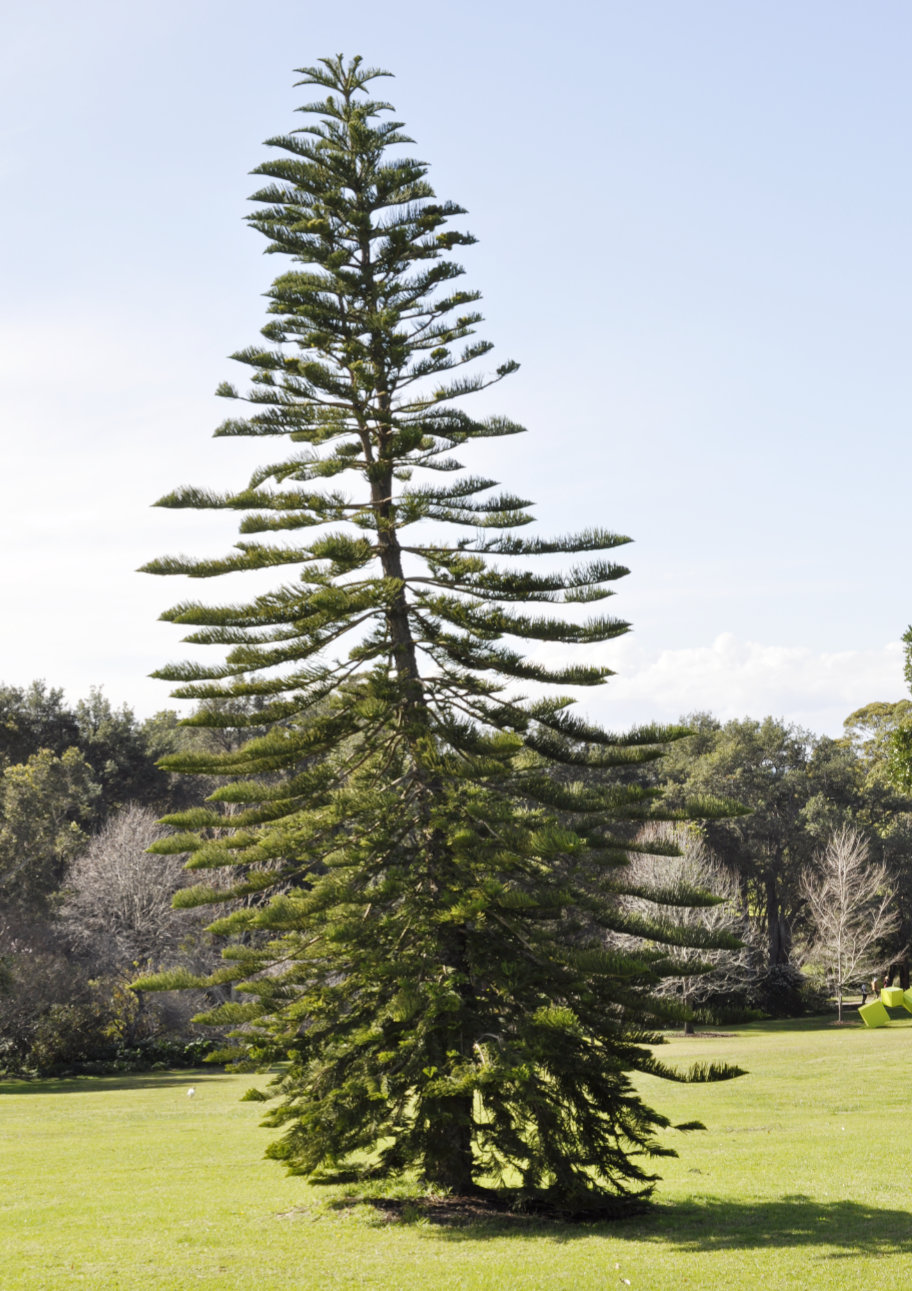
Araucaria columnaris
copyright © Kristi Ellinopoullos
It is even more clear here (hint: compare with the very upright young tree to the right!):

Araucaria columnaris
copyright © Kristi Ellinopoullos
Yes! Cook Pines lean, and specifically, they lean towards the equator. The above photo was taken in the morning with the sun in the east, at a latitude of roughly 34° S. The further north or south of the equator, the steeper the lean. There are some incredible photos here showing how steep this lean can be.
Plants are renowned for their stems growing towards light and the roots growing away from light. This phenomenon is known as phototropism, and is the result of the stimulation of growth hormones called auxins. Growth can be positive (towards light) or negative (away from light).
Less well-known, is that plants also have gravitropism — growth in response to gravity. Gravitropism is due to gravity-detecting cells called statocytes determining where auxins are laid down in plant cells, which then direct growth to align with gravitational pull. Growth here too can either be positive (in this case, downwards, with the gravitational pull) or negative (upwards, against the gravitational pull).
Overall growth in a plant, whether up or down, is typically the result of both phototropism and gravitropism working in conjunction. However, the lean of a Cook Pine towards the equator specifically — so typical that it is a defining characteristic of the species — suggests that Cook Pines have a lesser response to gravity than they do to light. The response to light appears to cause exaggerated growth towards the Sun that would otherwise be dampened by growth corrections due to gravity.














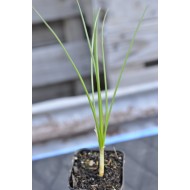



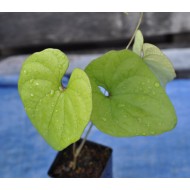

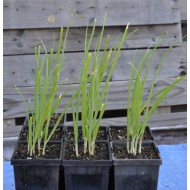

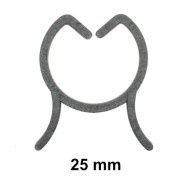






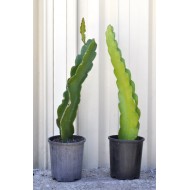



Leave a Comment